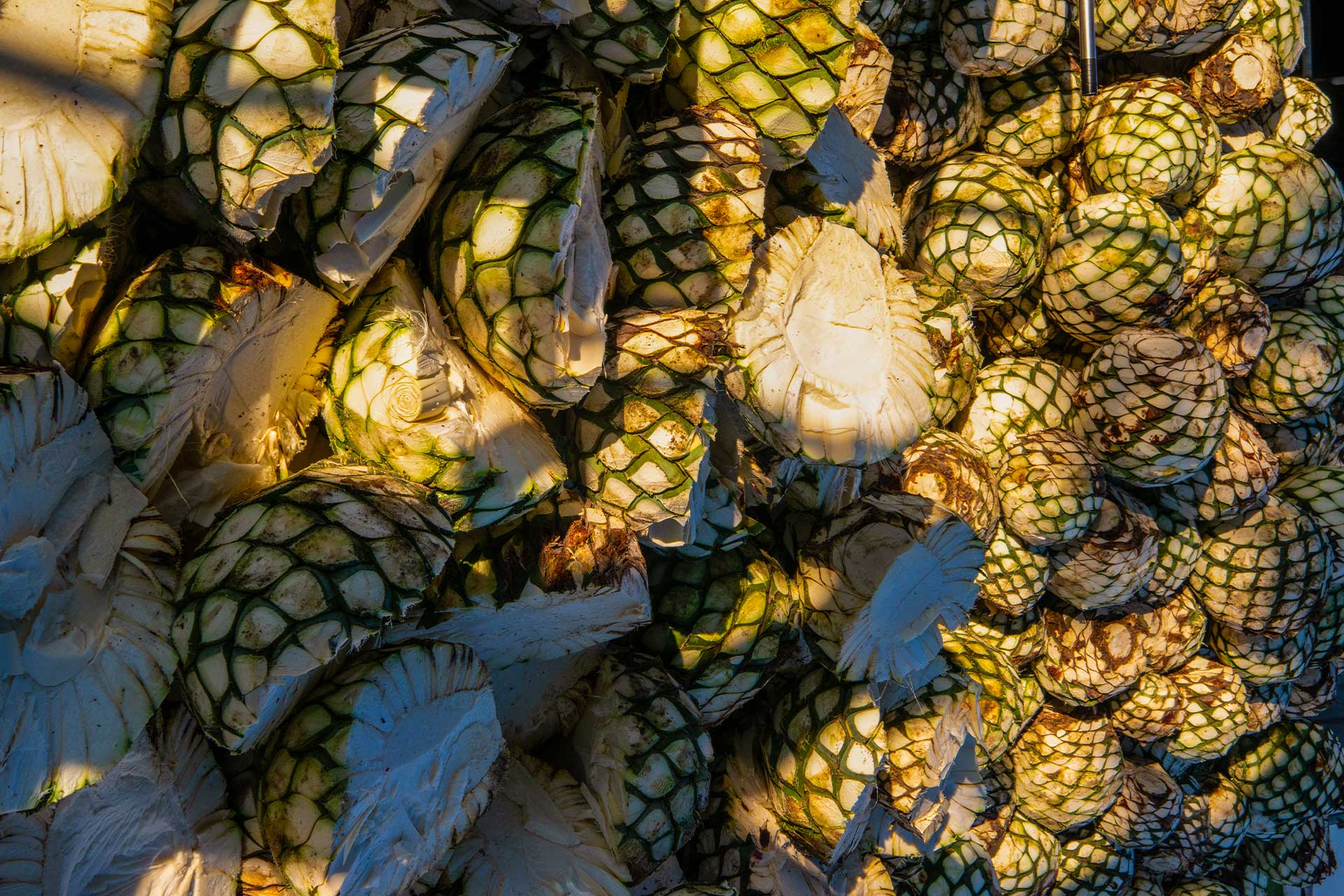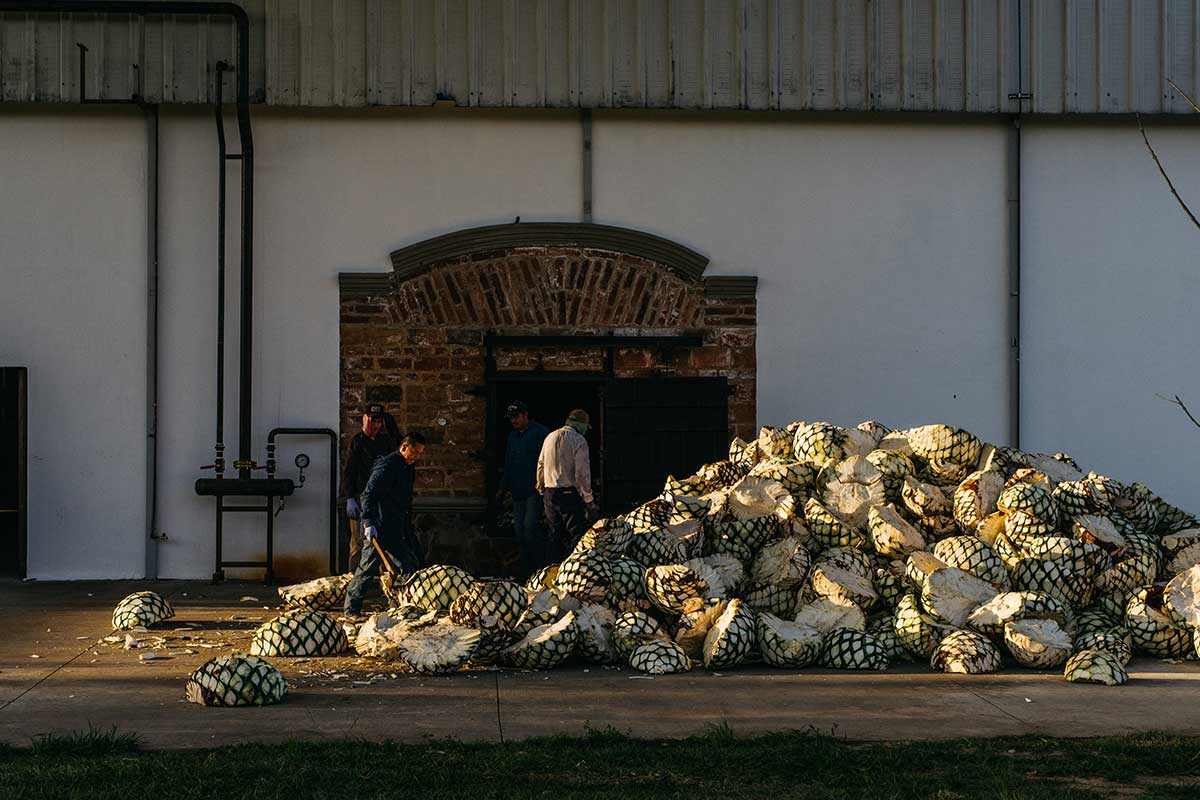The Mexican drink par excellence, tequila, finds its origins in the use of a particular refined material of the region of Jalisco: the case of Volcán De Mi Tierra
From Tequila volcano to beverage
In Mexico, there is a territory called Jalisco which is located on the slopes of the Tequila volcano. More than two hundred thousand years ago, this volcano erupted making the surrounding land fertile and turning it into a place suitable for the cultivation of agave. The agave plant belongs to a species which can resist arid climates and has higher hydro-efficiency compared to the average of the other plantations. This is thanks to its particular photosynthetic adaptation called Crassulacean Acid Metabolism (CAM). Despite it being a versatile resource which can be used to make paper, sweetener or fodder, it receives great recognition in the beverage sector. Regarding tequila, it received the protected geographical denomination which includes mezcal produced only with the agave tequilana species.
At the beginning of the nineteenth century, this plant was used for the preparation of a homemade type of alcohol known as vino de mezcal. Now called tequila, the result of this beverage was unique because of the aromas of the blue agave. This history of Mexican tradition has defined the country as a leader in tequila production. It is intertwined with the family tradition of the Gallardo family; active in the distillery and fermentation industry for more than three centuries and is positioned right in the Jalisco region, as Don Juan explains. In 2017, Gallardo founded Volcan De Mi Tierra. Translated into ‘volcano of my land’, the production represents a celebration of provenance and legacy for his family.
The cultivation processes
Although agave is cultivated in different territories around the world, the eruption of the volcano made this specific territory of Jalisco particularly suitable for the cultivation of blue agave, applying for the denomination as the origin of Tequila since 1977. Cultivation within a protected and dedicated area promotes sustainable development in the Mexican territory, encouraging the growth of wild plants and ensuring a continuous production of distillates.
Gallardo explains that the type of production he uses is characterized by the inclusion of hijuelos, small agave shoots that grow around the main plant when it has matured, grounded in the soil. For about seven or eight years, it is necessary to feed the plantation in an adequate manner, despite its resistance to the arid climate. It needs a precise amount of nutrients for the production of biomass. Peek biomass productivity occurs in the last years of the plant’s life and depends both on the species of agave and the type of soil.
The biomass yield without irrigation
In Yucatán, for example, the biomass yield without irrigation is poor compared to the average without irrigation because the soil is karst and does not retain moisture. On the other hand, Gallardo’s soil is rich in substances such as basalt and iron, achieving particular aromas compared to other production fields. It is also essential that this step is carried out with great care in order to allow the agave to develop the right quantity of sugar content before being harvested.
The jimador, a specific farmer suited to growing agave, understands and identifies how mature the plant is and when it can be harvested. The next step consists in separating the piña, which grows in the center of the plant, from the leaves by using a sort of flat knife resembling a shovel. In order to only keep the heart of the plant, this process is done completely by hand: the piña is harvested, using the tool described above to cut off all the outer leaves of the plant, saving only the pulp.
The tequila development
Each distillery has its own specificities in the creation of the tequila product through the processing of the agave. Volcan de mi Tierra has its own distillery which is led by two maestros tequileros who oversee the process. In their case, they start by letting the agave sweeten in the sun. The selection of agave starts from the field where they choose depending on the type of tequila they want to go for; different territories, from the highlands to the lowlands, give different aromas.
Agave juice and sugars are extracted by grinding the harvest using both modern and traditional techniques. One historical way is done by using a volcanic stone, also known as the ‘tahona’. This phase is followed by cooking the agave. Gallardo explains that for his particular product, they employ two different types of ovens. The substance is then placed into wooden barrels where slow fermentation takes place through the use of selected yeasts. It follows the distillation in copper stills and then the final step – the storage –where the tequila can age inside casks, for a period that can last from two months to three years on average. Once all that is done, it is time to bottle.
The different products: Volcán de mi tierra blanco and Volcán de mi tierra cristalino
Raw agave, in particular the blue agave from which Volcán De Mi Tierra is one-hundred percent made, can be used for different types of products, not just for beverages. From the 159 various types of agave present in Mexico, the blue agave is related to the recognition of ‘terroir’, Gallardo clarifies. Quoting the Oxford dictionary, in enology it represents the relationship that binds a grape variety to the microclimate and mineral characteristics of the soil where it is cultivated; it determines the character and uniqueness of the wine that is produced.
Due to the differences in cultivating and processing, two different distillates are created. «Volcán Blanco is built on an assemblage, selecting the best agaves from two different regions, the lowlands and the highlands, to achieve a richer palette of aromas and offer a complex, smooth and elegant liquid without additives», explains the founder. According to the company, this blending technique makes it possible to mix the spicy and herbaceous notes typical of the plains. Another product, which is the result of different aging and filtration, is Volcán Cristalino; a blend of a one-year old tequila añejo and an extra-añejo, aged three years. The brand points out that through natural filtration, the color and woody notes are removed and the distillate is crystal clear.
Lampoon reporting: blue agave raw material
The use of agave for the production of beverages is one of the fastest growing and widespread activities worldwide. On the other hand, in recent years the increasing demand for raw material and the consequent creation of tequila have made it difficult to maintain the quality of the product. Regarding the Volcan de mi Tierra product and its consequent entry among Moët Hennessy’s wines and spirits brands, Gallardo claims that the research through territorial knowledge is key in the development of a luxury good.
The localization of cultivation and controlled production in the Jalisco region of Mexico provides a level of social benefits for the inhabitants. In lowland areas, the development of the industry concerning tequila production is concentrated. Here, Gallardo says, more than three million families are involved in this business, fostering the development of a community framework. As for agave’s cultivation system, the use of irrigation is fundamental for the achievement of an optimal outcome of the final beverage, despite its high resistance to warm climates.
The focus on agave plantation
The growing demand for blue agave has forced extensive plantations, dismissing regulation at the level of biodiversity; now several companies, including Gallardo’s, are reflecting on the strong limitations of chemicals such as pesticides. Another issue to which greater attention is being paid is the cyclical nature of the land. The focus on agave plantation has prevented the dispersal of wild plant species in Mexico.
Of concern in the cultivation and processing of agave is its waste product, which is harmful if not disposed of properly. Gallardo states that in his company, they recycle byproducts and, through a system of collaboration between companies, their waste product is supplied to the nearby sugar mill to produce electrical energy. The versatile material also allows this methodology to be applied to other types of production, such as paper and straws.
Volcán de mi Tierra
Luxury tequila brand founded in 2017 from the Gallardo family know-how in the beverage Mexican sector for centuries. The research on the blue agave and the consequential production of a luxury product permitted the brand to be included in the Moët Hennessy portfolio.




















